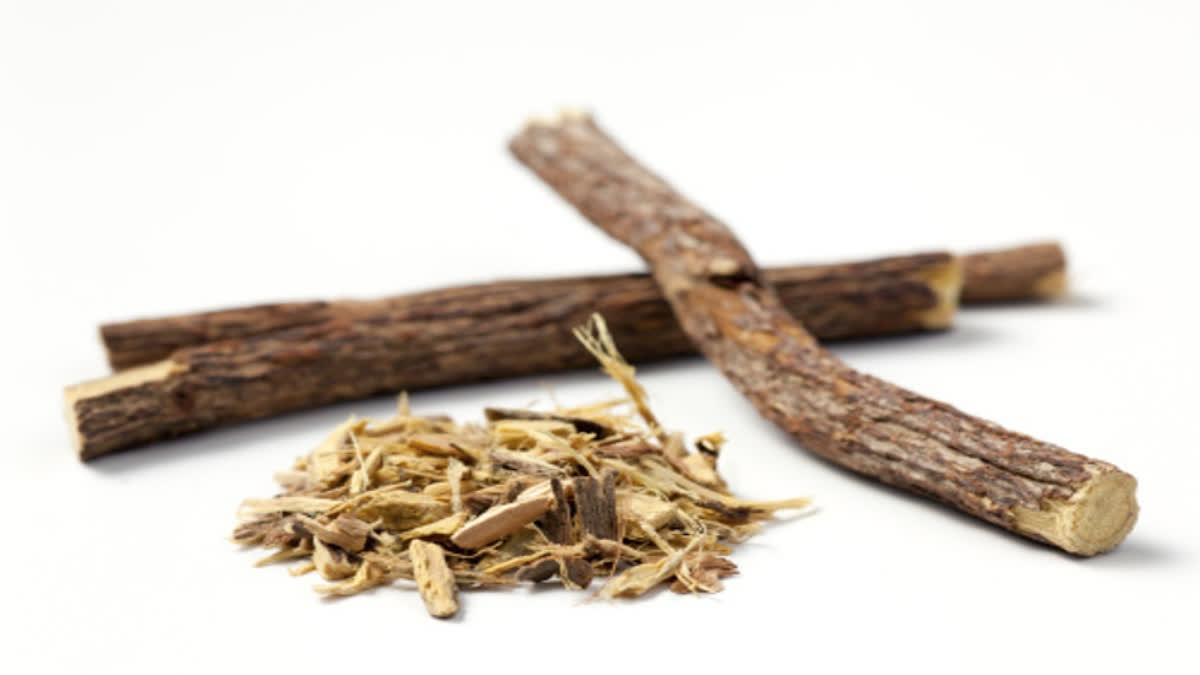New Delhi: Investigations into different drug seizure cases in India have revealed that the drug mafia has started using the latest modus operandi of drug trafficking through consignment of licorice roots (mulethi) or drugs soaked in mulethi. “Yes, that’s a new modus operandi being used by the drug mafia. We have asked all central and state level intelligence agencies to be extra cautious while dealing with cases related to drug seizure,” told a senior central intelligence official to ETV Bharat on Thursday.
When asked about the reason for using licorice roots for drug smuggling, the official said that the use of this method may sometimes outsmart the agencies. “In one case that took place in Mumbai, our agencies confiscated a huge consignment of 22 tonnes of licorice. Following a close look, it was found that licorice (mulethi) was coated with Afghan heroin,” said Sunil Kumar Sinha, principal additional director general of the Directorate of Revenue Intelligence (DRI), to this correspondent.
In that case, at least 355 kg of Afghan heroin worth Rs 20,000 crore was coated in the licorice. The drug traffickers always try to use new modus operandi to evade law enforcement agencies, said Sinha.
Mulethi is used to make herbal medicine for treating a variety of health factors, including lung, liver, circulatory and kidney diseases. Mulethi root is promoted as a dietary supplement for conditions such as digestive problems, menopausal symptoms, cough and bacterial and viral infections.
Interestingly, the National Investigation Agency (NIA) on Tuesday arrested one Tahseem alias Mota, a resident of Shamli in Uttar Pradesh, in a case related to the recovery and seizure of 102.784 kgs of heroin worth Rs 700 crore.
The drugs were seized by the customs department on two occasions in April 2022, after they were smuggled into India from Afghanistan through ICP Attari in Amritsar. The drugs were concealed in a consignment of licorice roots.
“In both the cases the origin of the drugs and narcotics was Afghanistan and the drug traffickers were found using the same modus operandi of using the licorice roots,” the official said and added, “Following cohesive steps taken by the law enforcement agencies in India, the drug mafia is exploring new avenues for drug trafficking.”
The latest report of the International Narcotics Control Board (INCB) said that most of the heroin found in South Asia in recent years appears to have originated primarily in Southwest Asia having been manufactured from opium produced in Afghanistan.
According to the report, the average annual seizure of heroin in South Asia, along the southern route, increased to the extent that the total quantities of heroin and morphine originating in Afghanistan that are seized along that route are now larger than those seized along the northern route, which mainly supplies markets in the Russian Federation via Central Asia.
In South Asia, methamphetamine manufactured in Afghanistan reaches both India and Sri Lanka. “Most users of amphetamine-type stimulants in India are found in the country’s western states, while the prevalence of methamphetamine use is highest in its eastern states close to Myanmar. India is increasingly being exposed to the expansion of methamphetamine trafficking from both South-West and South-East Asia (mainly originating in Myanmar), which poses a high risk of significantly increasing the availability and use of the drugs in the country,” the INCB report said.



